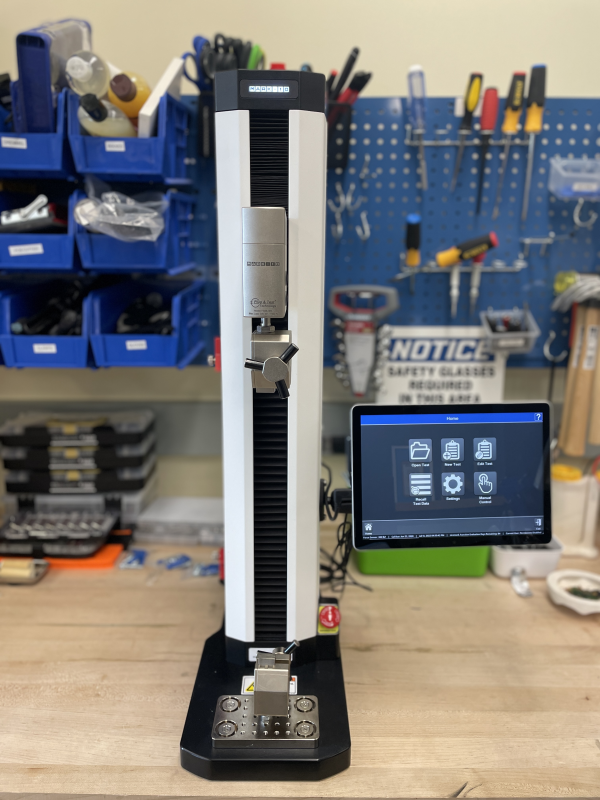Mark-10 Tensile Testing Machine

Important Links
Mark-10 is a tensile testing machine widely used for evaluating materials' mechanical properties.
The following functionalities it can provide:
- Produce tension and compression force up to 67 lbF (300N)
- Programmable speed produces more consistency than with manual stands
- Advanced functionality, such as pull to break, cycle, preload, maintain load, PC control
- Seamless force sensor interface
- Simple test creation wizards
- Robust data acquisition and management
Things to Avoid
When the test frame is not in use, ensure that the power is turned off to prevent accidental engagement of any of the controls.
Safety Checks
The following safety checks and procedures should be performed before and during operation:
Wear eye and face protection when testing, especially when testing brittle samples that have the potential to shatter under force. Be aware of the dangers posed by potential energy that can accumulate in the sample during testing. Extra bodily protection should be worn if a destructive failure of a test sample is possible.
Keep away from moving parts of the test frame. Loose articles of clothing should not be worn. Long hair should be covered to avoid a hazardous situation. A Crush Hazard warning label is located on the base of the test frame. It appears as follows:
"Definition: Keep any body parts and clothing clear of the area between the base of the test frame and the moving crosshead."
In those applications where samples can shatter, or in other applications that could lead to a hazardous situation, the use of a shield is strongly recommended.
When the test frame is not in use, ensure that the power is turned off to prevent accidental engagement of any of the controls.
Operational Checks
Always consider the characteristics of the sample being tested before initiating a test. A risk assessment should be carried out beforehand to ensure that all safety measures have been addressed and implemented.
Ensure that grips and fixtures are positioned to ensure axial load with respect to the load axis of the force sensor. Ensure that they secure the sample in such a way that it is prevented from slipping out during a test, which is a safety risk to the operator and others in the vicinity. If using a grip or fixture from a supplier other than Mark-10, ensure that it is constructed of suitably rugged materials and components.
Cleanup
Clean the testing area after the testing operation. Especially, remove the broken samples from the grips.


 Safety Operating Procedure
Safety Operating Procedure